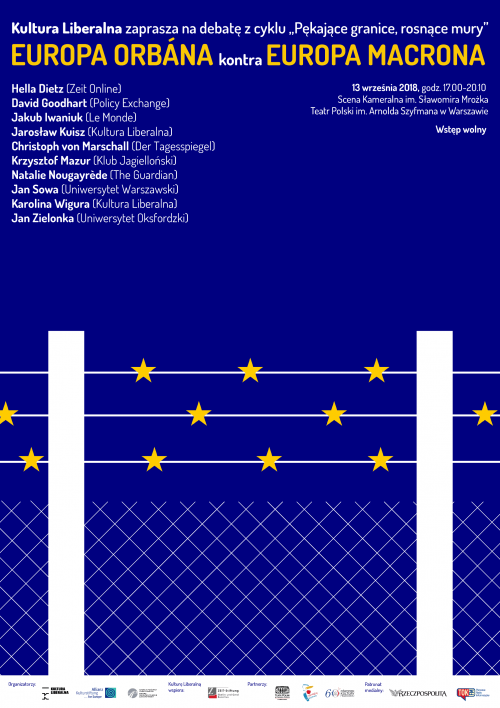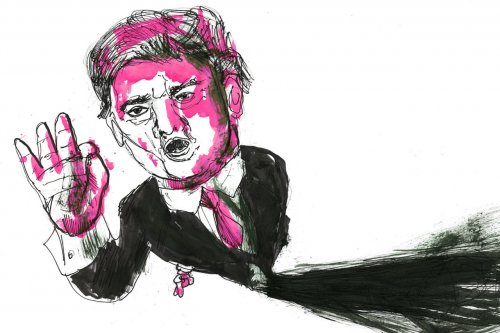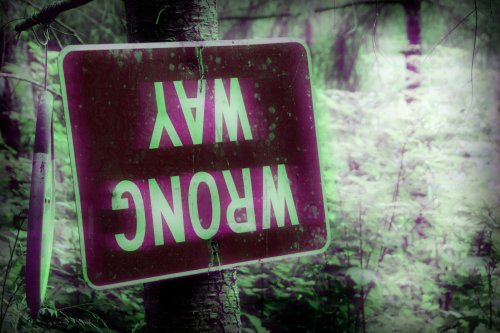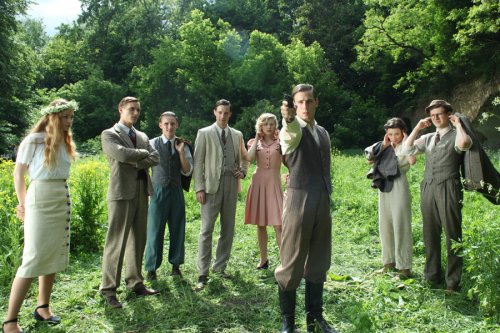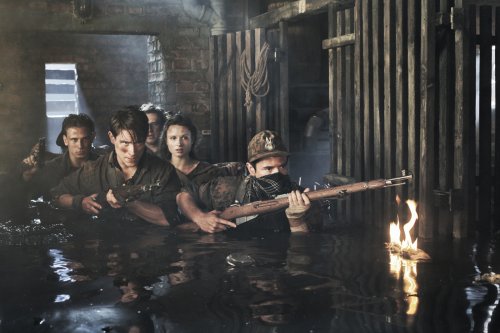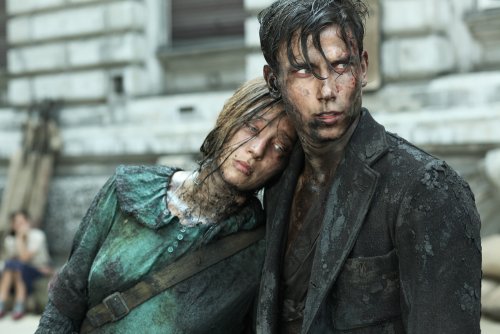We had approached The City 44, at least up to a point, with high hopes, reinforced by the first trailers. We had been waiting long for such a film about the uprising: properly funded, modern in form, narrated with verve, not dodging difficult topics, but also not treating them condescendingly. It was made by Jan Komasa, who perhaps had not avoided some blunders in Suicide Room, but he evidently tried to understand a major problem of our times. Meanwhile, after the August premiere of The City 44 we heard that it was going to be bad; but we also heard the director who swore that a revised version would hit the cinemas in September. More wanting to believe than believing, we extended our credit – only to encounter a work which perfectly suits its historical foundations: both here and there we have a disaster.
The uprising in a microscale
Komasa’s film was advertised with the slogan “love in the times of the Apocalypse“, billed as a work which moves away from “grand history” to focus on the fate of ordinary individual persons drawn into the vortex of historical tragedies. As such it joins the now powerful school of artistic disgust with any kind of “bookishness” and reflection on wider processes, a school of telling stories rather than speaking about history. Such an approach on the one hand makes it possible to avoid didacticism and academism, to breathe life into monuments and stereotypes – but on the other hand it may result in losing touch with the entire specific political and social context, which, whether we want it or not, influencers the life of individuals. Let us take the example of the excellent Obława [“The Raid”] by Marcin Krzyształowicz – it is great that we have a film about loss, despair and fatalism of the rank-and-file underground soldiers, who somewhere deep in the cold and muddy forest cling to the last remnants of hope that their struggle makes sense. But it would be good if an artist turned up who would be able to show in an attractive way the dilemmas resolved at higher levels, by figures whose names you cannot invent, whose biographies and achievements have to be carefully studied beforehand. Without this, historical cinema will continue to be grotesquely tilted to one side.
Komasa’s characters are pale and paper-thin. All seem barely sketched, concocted of ready-made (stereo)types – it is vain to look for signs of internal struggle in them, of amorous passion or nervous breakdown. In an era of cherishing eyewitness reports, with their motivations, values, fears and doubts, such an omission of psychology seems at least surprising, and above all unconvincing from the point of view of a strategy of telling individual stories. The purely reactive acting style of Pawłowski and Wichłacz, almost mechanical in its anachronousness, does not incline to empathy. The viewer, confronted with the growing bloodshed and weakening expression of the actors, may feel increasingly distanced. This is astounding given the fact that in Suicide Room the director had no trouble in managing the actors. Gierszał was capable of pulling at emotional strings with his hysteria – Pawłowski leaves you with your mouth open in silent amazement.
In this vision perhaps not all the Poles originate from a country manor house – but only because some of them are children of pre-war military officers. Robert Gliński recently showed in Kamienie na szaniec [“Stones for the Rampart”] that it is possible to signal differences in social views and orientations of characters. Such characteristics of boys and girls in Komasa’s film are glaringly absent. All we know about them is that they love each other and of course they love their homeland. But what kind of homeland? Unfortunately the filmmakers could not find in themselves enough resolve to stop for a while and ask this question. It is very good that people living several dozen years ago are not portrayed today as living billboards with ideological declarations. It is very bad when all this human universalism submerges the things that were important for them in their specific time and space. It is obvious that not every young soldier of the Home Army reflected on the shape of the agrarian reform in the rare moments free from conspiring. But such people did exist – and without them the picture of the past will be incomplete. What Komasa did was to introduce a small mark of social differences between the two female protagonists into the theme of their competing for Stefan’s favours – which can only dilute this conflict.
Ornament 44
The trailers of The City 44 also raised hopes that our cinema theatres would finally host a Polish film in which battle scenes would not be enacted by five guys, one tank and half a ruin, in which the historical drama would be presented not only on the reflexive, but also on the physical level. The necessity of picturing the feverish character of fighting in the maze of streets and corridors, the progressive decay and finally destruction of the urban and human fabric, created huge opportunities for the director, cameramen and special effects wizards.
Komasa is a young director, so it is difficult to blame him for wanting to use the newest means of artistic expression. Let him have his mixing of styles: a computer game, a horror, a Hollywood love story and a war movie in one. But why does the artist completely lose his bearings in this multitude of genres? Why is he sliding into tackiness, for example in the scene with Stefan and Biedronka kissing for the first time, where even Oskar Dirlewanger would burst out laughing? Lack of moderation affected also the sequence of marching through the canals, the experience so traumatic, so intense that today probably inconceivable. So while supplement the fear of bullets raining from above, darkness and stench of excrement with a phantasmagoric style of a second-rate thriller or a video-clip, with walls gradually closing in? The rich ornamentation of The City 44 seems completely random, used without any sense of the context. Does it change our perception of the uprising that for a few seconds we observe the increasingly desperate defence of Czerniaków with a camera from a computer game, following the barrel of a gun? Does the compulsive use of slow motion or electronic music in the love scenes create a new quality in terms of the plot or aesthetics? Sitting in a cinema chair, we are watching completely random sequences, selected as in a toy shop, juxtaposed in an infantile chaos and a carnival of colour. And we ask ourselves what the story, “ornamented“ with such visual attractions, is really about. Did Komasa know at all what he wanted to say about the uprising?
What is worse, as a result of this mishmash even the scene – shocking in its intent – of the bloody rain after the explosion in Kiliński Street (as Gajcy wrote: „All the saints, hey, to the table! / In heaven there is a feast: Polish tripe / straight from the gutters of Kiliński Street! / The bowl full of brawn / Fresh, crisp / Smelling of corpses”) is so different from the rest of the film that it seems just ornamental. A traumatic encounter with the inconceivable is reduced to showiness. As Tadeusz Sobolewski rightly pointed out, successive dramatic images shifting before the viewer try to capture not so much the brutal naturalism of the “time of the great carnage” but its wild emotional processing.
Unfortunately, problems do not end even here, for the planned intensity of the experience soon turns out to be disappointing. Despite all the effects there is a constant lack of scale, space, breath. The first sequences showing the uprising itself linger rather than run. Although the pace accelerates then, and the effects get more dense and flickering, the boredom and emptiness become even more pronounced. The successive scenes lack mental discipline, the ability to select themes and events. The story of the uprising, which is by itself shocking, drowns in the excess of effects and sound chaos. Komasa underestimates silence: almost each scene is appended with a musical commentary ruining its poignancy or intimacy with the power of mortar fire, for example in the love scenes. And the author of The City 44 does not spare us tautologies: the line „you are an ordinary whore” must necessarily be supplemented with “I hate you”, so that the viewer (the artist must hold him in a very low esteem!) would not be in any doubt as to what emotions are at play. As we know, reality usually is much less interesting narratively than tales produced after the event – which means that translating it into the language of film without many kinds of modifications is extremely difficult. But The City 44 at one time screams and assaults the eyes, insistently calls for our attention in order to impress the audience with tiring tricks, but at times it even loses its showy momentum, standing still as if it didn’t know what to do with itself. Highlighting the horror mainly through close-ups on the waxy faces of the young characters – turned into inert zombies, as Jakub Majmurek writes – is the best illustration of this helplessness, not of the insurgents, but of the filmmakers.
Ruined takes
To be fair and all the above charges notwithstanding, we should appreciate references to a number of nonmainstream narratives surrounding the Warsaw Uprising – for example in the shape of the Jewish member of a Home Army squad or the Berling troops, shown rather as victims than representatives of the system which was throwing them around, regardless of heavy losses, from Lenino to Berlin. And not every officer in the uprising turns out to be an immaculate warrior, not every white manor is a haven of uncompromising patriotism. It is encouraging that the women are not shown in the role of cute embellishments, but as equal participants in the conspiracy and the armed rising. The City 44 also has a number of powerful scenes and well-made sequences. The episode showing the defence of a townhouse in Czerniakowska Street is filled with a batalistic nerve which translates into emotions – the viewer may experience the growing drama and pain. The attempt at breaking through to the river has something of a death ballet to it, something almost elegant in its relentlessness and piercing sadness. And finally the image of the hospital like a vestibule of apocalypse, filled with shot, hanged and singed corpses. Unfortunately, the positive impression is effectively killed by the narrative binder in which a miss from a manor house saves not only her life, but also – as we can guess – the inviolability of her body.
But regardless of both the structural weakness of The City 44 and its few stronger points, we must mention two episodes which are like grenade in the ointment, by themselves sufficient to disqualify Komasa’s work. The first signals an urgent need to ban – for at least twenty years – the use by Polish filmmakers of a certain song by Czesław Niemen. „Strange World” is now an equivalent of argumentum ad hitlerum in online debates, the ultimate simplistic shortcut, which is doubly embarrassing when set against slow motion takes of the cemetery shoot-out (what symbolism!). The other blunder is of course imposing on the panorama of the glowingly fiery City 44 the image of the glowingly neony City 14. As if the hapless capital and the exasperated viewer needed a final shovel blow in the head, as subtle as the analogous ending of the notorious Quo Vadis by Jerzy Kawalerowicz.
The “Nothing” Hour
A great work – not only artistically, but also, excuse le mot, morally – can be identified by the fact that it is not satisfied with one shade of colour, one vision, one side of the coin. It is looking around with empathy, but also criticism, it confronts competing views with each other and when the artists propose their own interpretation, they are aware of the old baggage of experience which has accumulated as social and cultural context. And here this baggage is big: we emotionally experience every anniversary of the uprising preceded by heated discussions, sometimes we are even embarrassed when seeing “uprising T-shirts“ and Cobi blocks with which children can play in being Home Army soldiers… Despite seventy years having elapsed, the subject of the uprising still festers and brings discomfort.
And what impulse for discussion is offered by Komasa? Apart from the trivial visual layer – absolutely none. The greatest sin of this film is lack of a general idea. Limiting the narrative to micro-stories combined with blandness of its characters produce a totally incoherent story and reflection about the time of the uprising and the way we experience it today. We do not know if the aim of The City 44 is to describe the vicissitudes of a shaky protagonist, ultimately an indomitable hero, or the sufferings of an ordinary city dweller accidentally drawn into the uprising. It is not clear if the director is taking any position himself, if he is closer to being an apologist or a debunker. The film gives the impression of having been tailored to satisfy the needs of everybody. Veterans, custodians of memory and defenders of honour receive only an ersatz of an epic story about struggle and sacrifice, but they can be happy that no monument was seriously chipped.
Sceptics may feel appeased by a few standard cries of the kind , “I do not want to die!” and “Was it worth it?!” or by the equally refreshing motif of the mother who does not want to send her son to the underground army. There is a Jew, there are general Berling’s soldiers, there are some ambivalent attitudes of civilians, who do not become a subject in itself, but rather play third-row role of figures from computer games which say their parts when the protagonist is running past. The director’s observations are superficial and trivial, they just slide off the characters and thus become empty ornaments.
Komasa is practically not asking anyone about anything – neither us, nor the insurgents. He is not interested in the position of the uprising in our awareness, he is happy with the general, safe frame „we remember 1944”. The effects he surrounded his production with, even if they move someone for a while, evaporate with the final credits. This indifference of the viewer, given the lightning power and intensity of the memory of 1944, impresses as the biggest – albeit certainly unwanted – feat of the author of The City 44. It is a great pity that the already classical album of the band Lao Che “Warsaw Uprising” (released in 2004) will remain a soundtrack of an un-made film. A film which could finally help us to formulate an answer to the question, what are we exactly celebrating when we stop in our tracks every August 1 at 5 PM? The trauma of defeat, a longing for the generation that went under the axe, the pride of moral victory, the ego of a nation remembering its past? For if anything, Komasa said that we should stop.
Film:
The City 44, directed by Jan Komasa, Poland 2014.


